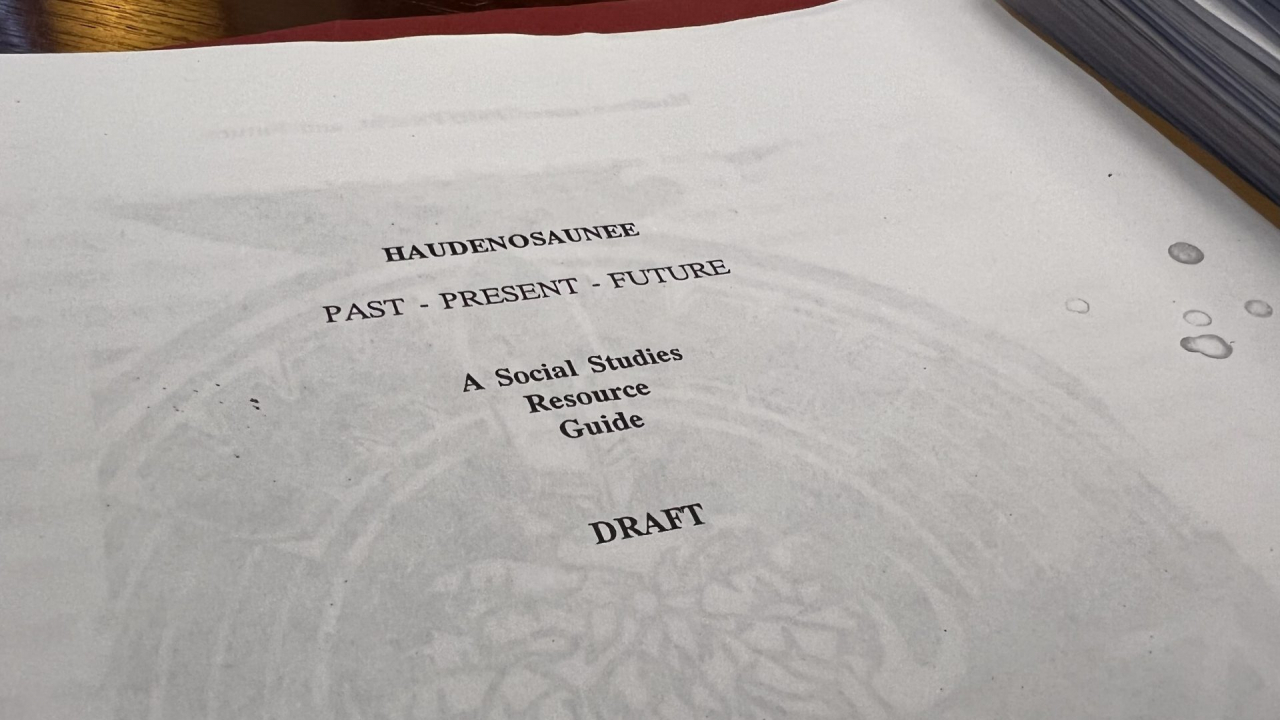
SYRACUSE, N.Y. (NCC News) — A narrative. A spoken or written account of connected events. A story.
The American education system is built around narratives. A curriculum that has been criticized by those with stories that are usually told incorrectly. But, these incorrect narratives can lead to a lack of confidence and low grades in the classroom, no matter the subject.
High school graduation rates of Indigenous students are far lower than average. Indigenous students have a graduation rate of 67% compared to a national average of 80%. The percentage of Native students in higher education is even lower.
There’s no singular reason as to why this may be – many Indigenous students believe there’s many factors that tend to stack up.
“I think it can be uncomfortable being a Native student in the traditional classroom setting because sometimes I don’t feel as if my opinions or my input would be taken seriously by my non-native classmates,” Syracuse University sophomore and member of the Cayuga Nation, Eiza Capton said.
Syracuse University Ombuds Neal Powless agrees. When speaking to him, he told multiple stories about professors and teachers incorrectly teaching Indigenous culture or docking Indigenous students’ grades due to their interpretation of certain historical topics.
One story took place when Powless was an undergraduate student. He explained that the professor would teach incorrect and culturally sensitive content in class and once Powless complained, the professor lowered his grade.
“So, I proceeded to sulk and bemoan the rest of my semester in the class and I fudged my way through to a C… in Native Studies,” Powless said.
Because of his past experiences and hearing from current Indigenous students who feel outcasted in traditional classroom settings, Powless believes Indigenous-focused history programs created by Tribes and Nations across the country is a step in the right direction.
A 600-page elementary and high school curriculum was created by the Haudenosaunee in Upstate New York and proposed to the New York State Education Department in 1980, but Powless said it hit a roadblock. The NYS Education Department disagreed with the way the curriculum was written, therefore stopping the curriculum from being published.
“What could have happened if starting in 1980: New York State K-12 students could have been and would have been exposed to a different narrative,” Powless said.
Now – 40 years later – elementary and high schools in Onondaga county rely on the Syracuse City School District Native Student program and its program director, Lori Smith, to help students feel comfortable in the classroom.
The program has been a part of the SCSD for 35 years now. It has 449 students that participate in cultural activities that help them embrace their Indigenous culture. The program teaches students their language, cultural traditions and even hosts field trips around the area.
Lori Smith says the curriculum “makes [students] self aware of where they come from and who their people are and were.”
Smith also believes the program helps students feel comfortable in the classroom. With the lack of correct Indigenous history being taught in schools, Native students are often scared to speak up and correct their teachers. Lori says “when [schools are] teaching social studies and [students are] learning about the Europeans [they’re] speaking up saying… ‘Excuse me miss, Christopher Columbus did not discover America.” She believes students who make use of the program have a newfound confidence.
Hundreds of Indigenous students take part in the program, but Powless says things have yet to change, even 15 years since being a student.
“So there I am, sitting there, looking at these students and hearing stories that are exact replicas of what I went through in undergrad,” he said.
And he ended with a question, “how can an institution support a group of people that statistically is small in number, but massive in its impact?
Native students have some solutions, they’re just unsure if others would be willing to accept those changes.
“One solution would obviously be including Indigenous people in these discussions and not leaving us out. A broader solution would just be decolonizing our education system and the way we speak,” Capton says.
All in all, native students have hope. Hope that their narratives – That their stories of struggle can somehow inspire future generations of Native children to continue the fight.




